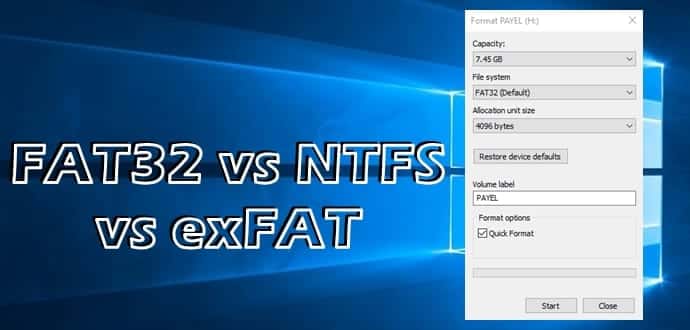The word is also used when referring to a partition or disk that is used to store files.
More often than not, an OS will have in-built support for multiple file systems.
Now, we are going to discuss about the details of the popular file systems.

NTFS
NTFS is the modern file system of choice.
NTFS has file size and partition size limits that are so theoretically huge you wont run up against them.
NTFS comes packed with the modern features were most used to.

NTFS works with every recent edition of Windows as youd have guessed.
Mac OS however, is set to only read files from an NTFS system by default.
Linux distributions are divided on NTFS support with some supporting it and others not.
FAT32
FAT is considered to be the granddaddy of file systems.
This particular format was introduced in Windows 95 as a replacement to FAT16.
The file system, being as old as it is, has now become the de-facto standard.
USB drives usually come formatted with this system to allow maximum compatibility across devices.
The family of FAT is supported almost universally.
Individual files have an upper limit of 4 GB on the FAT 32 system.
While the system is probably the best for external drives, it certainly isnt recommended for internal hard drives.
It lacks the permissions and other security features built into the more modern NTFS file system.
Modern versions of Windows do not support FAT32 system for the system drive as we already discussed.
exFAT
This is a proprietary file system with certain definitive advantages over NTFS and was introduced in 2006.
It is also compatible with NTFS, works with every available version of Windows as well as Mac OS.
On Linux, if you find it not working by default, there are software available to enable compatibility.
source: www.techworm.net